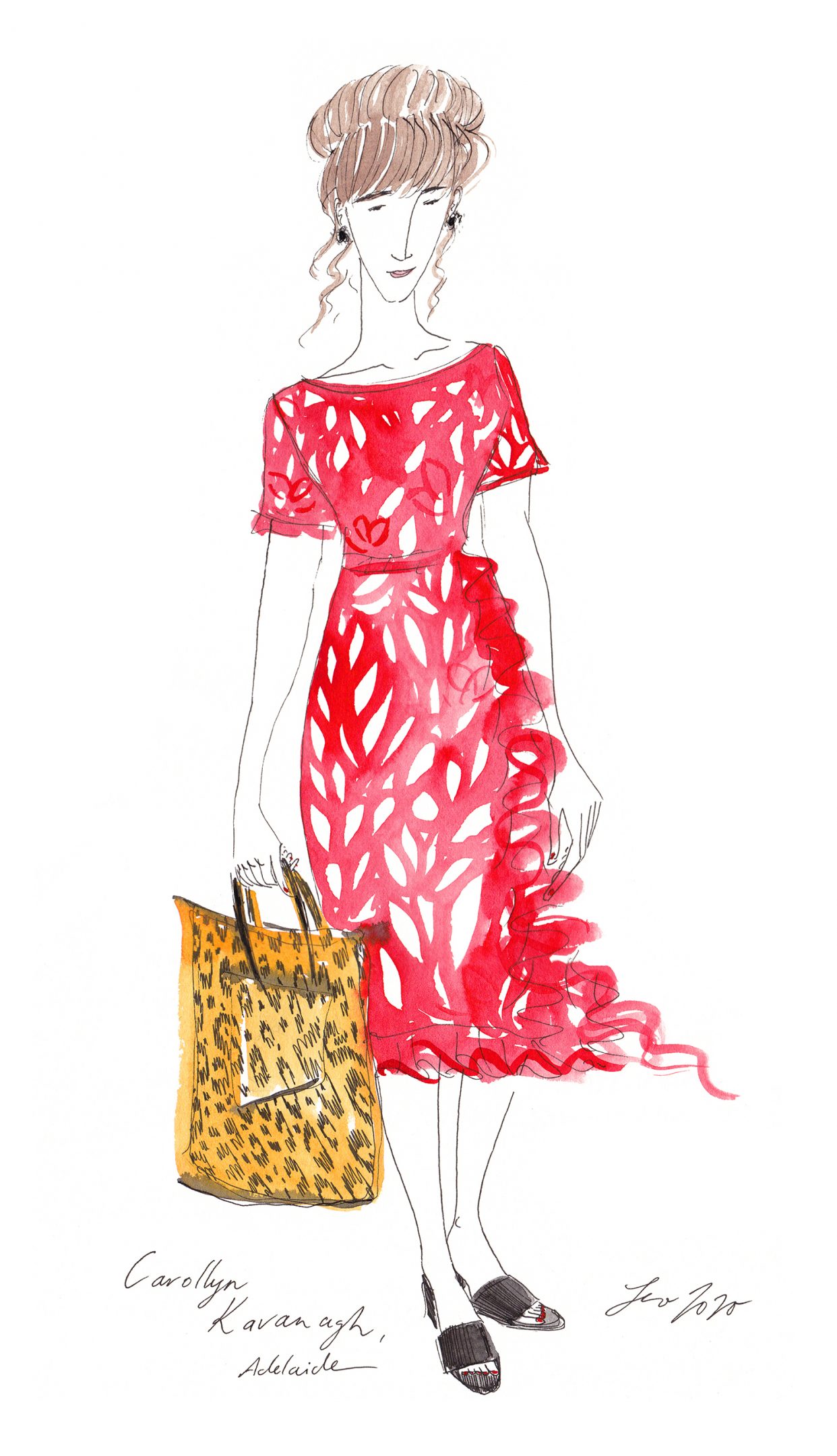Leo Greenfield
Leo Greenfield is freelance illustrator. His work can be found at leogreenfield.com.

Carollyn Kavanagh’s practice as an independent curator is driven by a desire to tell stories, especially those unique to South Australia.
Kavanagh, who humbly describes herself as an arts worker, carves out exciting new territory for visual artists by creating unique platforms for their work.
Today she splits her time between numerous curatorial projects, making galleries out of unlikely spaces, and her current role as the marketing and communications coordinator at the Australian Network for Art and Technology (ANAT), based on North Terrace.
Kavanagh always had an interest in visual arts and drawing and completed a Bachelor of Visual Communication at the University of South Australia. She built a career as a print designer and worked at The Advertiser for 20 years.
While working for the newspaper, Kavanagh started to think about how to take her interests in a new direction. “I noticed an ad in The Adelaide Review for a postgraduate course in Art History,” says Kavanagh, “and I was particularly interested as it was taught in connection with the Art Gallery of South Australia.
“I think I’ve always been a frustrated artist and in deciding to became a curator I discovered I was much better at telling artists’ stories and presenting their work than creating my own.” She completed the University of Adelaide’s Master of Arts, Curatorial and Museum Studies in 2013.
After graduation, Kavanagh become the Adelaide City Council’s first emerging curator, working to create exhibitions at the Town Hall and the then-new window gallery space Art Pod.
Soon Kavanagh was working with Guildhouse and the South Australian Living Artists Festival (SALA), which in turn opened up further opportunities for curating exhibitions in more unusual environments, such as Adelaide Airport.
“I began curating with SALA in 2014 with a focus on their annual exhibition within the terminal. This role grew into the opportunity to curate artwork for the Airport’s T1 program, which celebrates the experience of travel through the stories of emerging and established South Australian artists,” says Kavanagh.
Since these first exhibitions the themes of each show have expanded on the idea of art in the airport and moved into more experimental and diverse realms of expression, all the while celebrating SA artists.
“The program speaks to a largely non-arts audience,” says Kavanagh, “I’m proud of the way these exhibitions embed art into everyday life. It’s also a pleasure to work with a corporate organisation that values the role of artists, particularly at a time when diminishing government support for the arts is taking a heavy toll.
“In presenting art at T1, Adelaide Airport is seriously investing in South Australian artists. Both [by paying] artist fees and by exposing the work of local artists to a national and international audience of millions.
“If we want Australian stories to keep being told and Australia’s diverse artistic talent to succeed, it is crucial for the government and corporate Australia to value our creative culture. Financial support and remuneration make being an artist a viable career choice.” The airport is an exciting space for Kavanagh to work with as it is a democratic space, with vast walls and spaces ripe for transformation into an exhibition.
ANAT seems the perfect fit for Kavanagh as the organisation has been devoted to experimentation in the arts for 30 years. The institution works to connects artists with science and technology, opening up pathways to previously unimagined collaborations.
“My role is to tell the quite complex stories of these collaborations in a simple, compelling way. Stories like artist Eugenie Lee’s ANAT Synapse residency, which investigated how altering sensory perception using VR technologies might contribute towards chronic pain management, or artist Baden Pailthorpe, who worked with AFL player and crowd data to create a kind of sculptural video interpretation, making each player look like a cross between an avatar and a military aircraft. Pailthorpe, who collaborated with Aaron Coutts, a UTS professor of sports and exercise science, was asking questions about the nature of a crowd.”
ANAT, Kavanagh explains, ‘champions experimentation, with a focus on the research and process rather than the outcome. “ANAT introduces artists to new experiences, with no expectation that they will deliver something in return, other than to grow and learn.
“ANAT also exposes an artist’s way of looking at the world to the science and technology sectors. A CSIRO scientist recently described how he learnt a lot from his artist collaborator’s fearlessness, and his expectation of the residency was that it would broaden the ‘lens on their research’,” says Kavanagh.
Whether she is working to transform a public space into a gallery or build a new restaurant, Kavanagh believes collaboration is vital. “Collaboration is in ANAT’s DNA, it’s actually one of our core tag-lines,” says Kavanagh. “The organisation’s chief ambition is to build relationships across industry, academia, the community and government to create unique opportunities for artists. Some of our collaborators include the CSIRO, the Australian Antarctic Division and the Australian Wine Research Institute.” As an independent curator Kavanagh also sees collaboration as essential saying that, “after all it’s other people’s stories I’m telling.”
Adelaide Airport is currently featuring an exhibition of graduates from the Adelaide Central School of Art, and Kavanagh has just curated the Karoonda Council Silo project that sees a diverse selection of SA artists’ works projected onto the silos of Mallee towns throughout the year.
Note: Leo Greenfield’s illustrations were featured in an exhibition at Adelaide Airport in 2019
Leo Greenfield is freelance illustrator. His work can be found at leogreenfield.com.